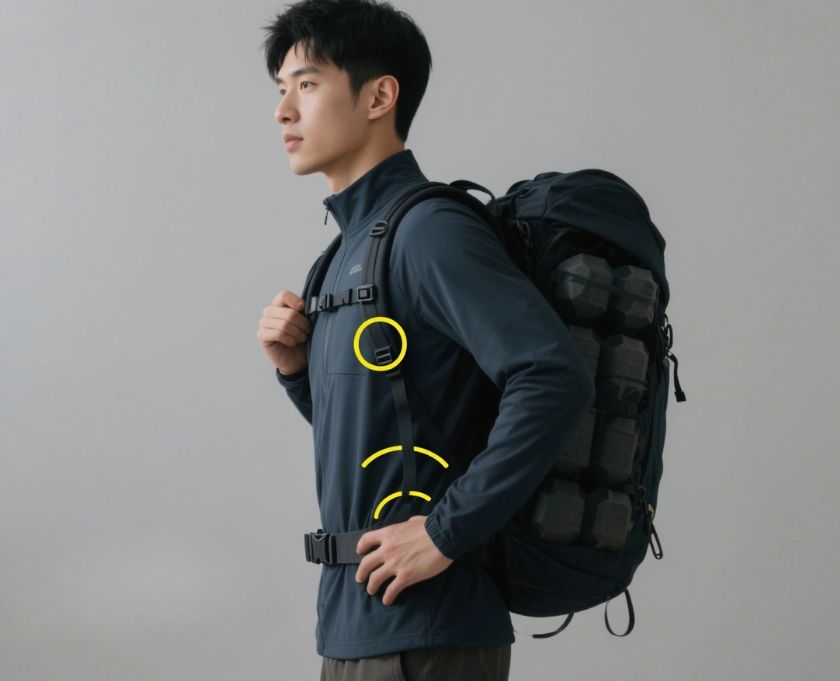Beautiful Plants For Your Interior

A travel backpack is more than just a bag — it’s an extension of your body during long trips. A poorly fitting backpack can cause shoulder strain, back pain, and fatigue, while a well-designed carrying system enhances comfort, balance, and endurance.
But how do you know if a backpack’s carrying system is right for you? This guide breaks down the critical factors: shoulder strap design, hip belt support, ventilation, load-bearing balance, and real-world fitting tests.
By the end, you’ll have a practical checklist to ensure your travel backpack works with your body, not against it.
What Is a Backpack Carrying System?
A carrying system refers to the structural and ergonomic design that distributes weight across your body. It includes:
- Shoulder straps → Adjust load height and reduce strain.
- Hip belt → Transfers weight to hips, relieving shoulders.
- Back panel & ventilation → Keeps airflow to prevent overheating.
- Load lifters & sternum straps → Help stabilize weight.
A good carrying system balances load distribution, comfort, and adaptability to different body types.
Why Backpack Fit Matters
Prevents Injury
An ill-fitting pack can cause long-term back, neck, and knee pain.
Improves Efficiency
Carrying weight correctly means you move with less effort.
Enhances Endurance
Proper support reduces fatigue during hiking, city walks, or airport transfers.
Boosts Travel Enjoyment
Instead of struggling with discomfort, you can focus on the journey.
Key Factors to Judge Backpack Fit
1. Torso Length Measurement
- Measure from the C7 vertebra (base of neck) to the top of the hip bone (iliac crest).
- Backpack torso size should match this range.
| Torso Length | Backpack Size Recommendation |
|---|---|
| < 40 cm | Small (XS–S) |
| 40–50 cm | Medium (M) |
| > 50 cm | Large (L–XL) |
2. Shoulder Strap Fit
- Should rest snugly, not digging in.
- Straps should curve with your shoulders, not leave large gaps.
- Adjustable load lifters (angled 45°) keep weight closer to your body.
3. Hip Belt Position
- Should sit centered on hip bones (iliac crest), not the waist.
- 70–80% of backpack weight should transfer to hips.
- Padded belts improve long-distance comfort.
4. Back Panel & Ventilation
- Mesh or airflow channels prevent excessive sweating.
- Check if the panel conforms to your spine’s natural curve.
5. Load Distribution & Stability
- Backpack should not sway when walking.
- Weight should feel close to your body’s center of gravity.
Step-by-Step Fitting Test Before Buying
- Load the Backpack (fill with 7–10kg for test).
- Adjust Shoulder Straps until snug.
- Secure Hip Belt on hips, tighten until most weight is on hips.
- Tighten Sternum Strap for chest stability.
- Walk for 5–10 Minutes → Check for hotspots or slipping.
Common Signs of a Poor Fit
- Shoulders carrying most of the weight.
- Hip belt riding above waist instead of hips.
- Backpack sways when walking.
- Pressure points causing pain.
- Back feels overheated with no ventilation.
Expert Tips for Choosing the Right Carrying System
- Always test with load, not empty.
- Choose adjustable torso length models if possible.
- Women-specific backpacks fit narrower shoulders and shorter torsos.
- For long-term travel → prioritize hip belt comfort.
- For hot climates → prioritize ventilation.
FAQ — Travel Backpack Fit
Q1: How tight should shoulder straps be?
A1: Snug enough to stabilize but not restrict movement.
Q2: Can I adjust torso length myself?
A2: Many modern backpacks offer adjustable harness systems — ideal for multi-user or growing needs.
Q3: Should I pick a backpack based on liters or torso length?
A3: Fit is more important than volume. Always prioritize torso fit.
Q4: What if I’m between two sizes?
A4: Choose the smaller size for a closer fit and better stability.
Conclusion
The right backpack carrying system ensures you carry loads efficiently, avoid injuries, and enjoy your journey more. Always test the pack with weight, pay attention to torso length, hip belt, and ventilation, and remember:
👉 A backpack should fit your body, not force your body to adapt.